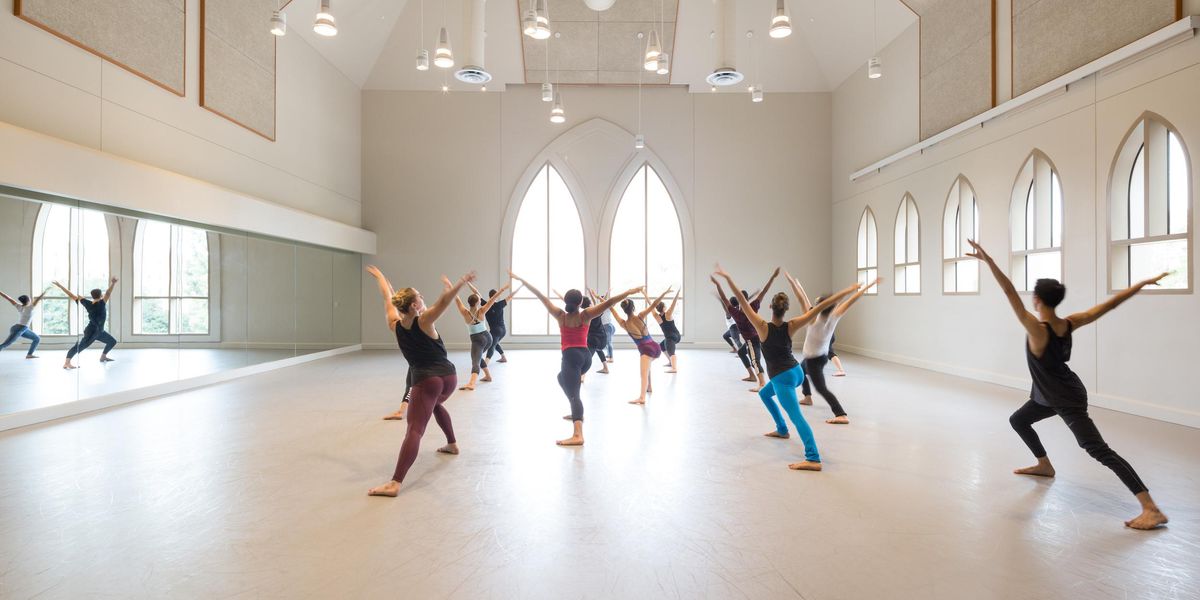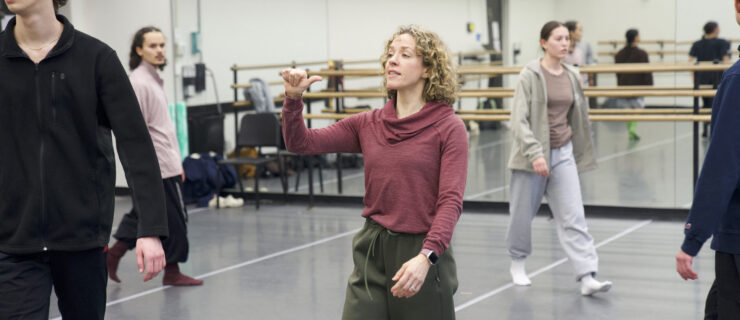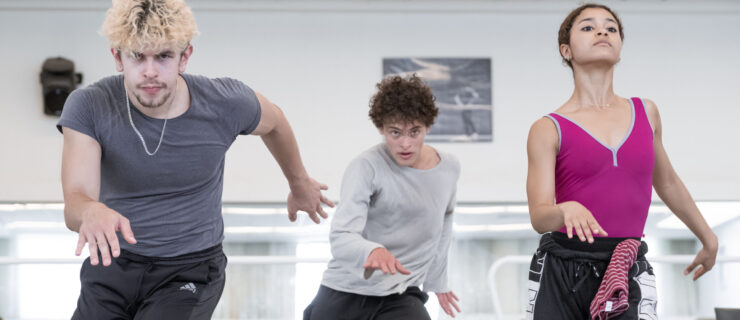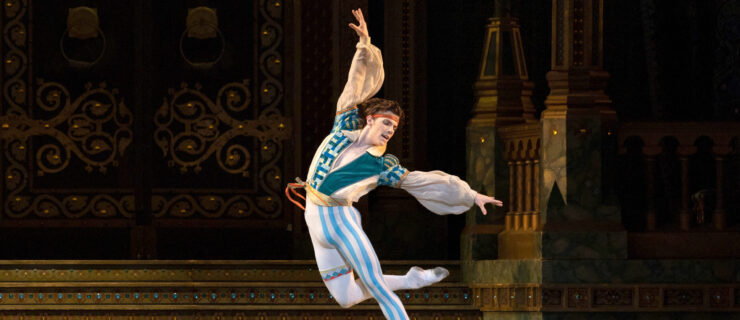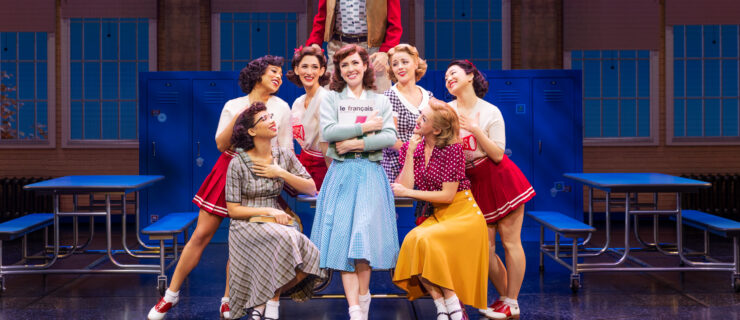In Our Words
Francesca Harper Artistic director,
The Francesca Harper Project, NYC
When my mother, Denise Jefferson, director of The Ailey School, was 11, her ballet teacher warned her that she would have to fight to pursue ballet because there were no African American ballerinas in major dance companies. So from an early age ballet became kind of a mission. I grew up at the School of American Ballet—I think there were two black females in my class—seeing these wonderful ballerinas and also seeing
Balanchine’s love of jazz. There was an abandon and a ferocity that I associated with Mom’s ferocity and Martha Graham. Merrill Ashley was one of my idols; she had this kind of Amazonian womanly body and was a ferocious technician. That to me was thrilling.
I would study at Ailey in the summers. My senior year when I went to the audition, Alvin took me in his office—he had known me since I was 3 or 4—and said, “You have a place in our second company, but I sense that you want to do ballet.” I kind of broke down and started crying, really out of relief that he knew. So I went to Dance Theatre of Harlem. To do all of that Balanchine rep, which I had fallen in love with as a child, was amazing! And then I went over to Germany and joined Frankfurt Ballet.
Ballet is a white-dominated world, and I don’t necessarily think it’s racism. I’ve had some amazing directors. Susan Stroman is a good example of someone who is aware of race and hiring African Americans. But I feel like what happens in these ballet companies is that it is just not in their palette. It’s not at the forefront of these artistic directors’ minds. That’s what it was with Billy Forsythe. He took the time to think about the social impact of his work and what it meant to put diversity out on that stage. The scary thing is that most directors just coast along in their comfortable bubble and don’t look at the larger picture of art and its social impact.
I am definitely aware of who I hire and where they come from. When people come to see the performances, the diversity heightens their awareness. In my company I have a Chinese American; three Japanese; one Indian woman; two women who are half Caucasian, half black; I have a man who is half Dominican, half black; and an ex-Ailey dancer who is French. I want to learn from other cultures and other people.
Maile Okamura
Dancer, Mark Morris Dance Group
Mark hires the best person for the job at each audition. He’s not setting out to build a company that has 3 black people, 2 Asians, 1 Hispanic, and 14 Irish people. It’s not like reverse discrimination in companies where they want the roster to look very diverse. I don’t like it when it obviously looks like a Benetton commercial.
A teacher once told me that Asians had a difficult time expressing themselves. I thought, Is that really true? I was a teenager. She might have looked at me as a student and thought, “This student has difficulty expressing herself because she’s Asian.” The truth may have been that I just had a difficult time expressing myself—or that I was a teenager. Someone once remarked to me that he saw the entire history of China in a dance that I did. I’m really glad he had that interpretation. That’s wonderful. People will see what they’ll see. I was just in Moscow and someone commented to me that people from China and Japan perform with great endeavor. What does that mean? We put ourselves on the stage and people have their opinions and ideas. I don’t think of myself as an Asian dancer, just as a dancer.
Stacie Williams
Dancer, Ballet Memphis
I was the only African American student besides my sister in Pittsburgh Ballet Theatre School. When I was Clara in The Nutcracker, I remember coming out of the stage door and hearing somebody say, “I’m surprised that little black girl did a good job.” That was the moment I became aware of how my color affected my career path. I was told at 13 or 14 that I didn’t have to worry as much because I am of a lighter complexion.
When I finished high school I went to Dance Theatre of Harlem because I wanted to see more people like myself. DTH was a nurturing environment, and when [the company] closed it was very sad.
I think a lot of the young minority students get discouraged at big ballet schools. They look at the company and see no one that “looks like me.” In Pittsburgh I felt at times that people couldn’t relate to me or didn’t know what to do with me. At DTH I thought, “Wow, we’re doing classical dance, but I don’t feel like the elephant in the room!”
Just because I’m African American people assume I’m going to be more of a contemporary dancer. They don’t expect me to wear a tutu. I love contemporary work but I wish that the doors would be a little more open if I wanted to be the lead in a tutu ballet.
The parents of the African American students here often express their gratitude to me for inspiring their sons and daughters. I love pushing the limits and opening peoples’ eyes about what African Americans are capable of doing.
Things might be a little easier for the next generation, but I don’t think there has been a ton of improvement. There aren’t very many role models. Twelve- and 13-year-old boys and girls just feel lost. People in power need to make a conscious decision to increase the diversity in ballet companies.
Nao Kusuzaki
Soloist, Houston Ballet
In Japan, ballet is regarded as a Western form of art. It’s still very exotic. I had always loved it, but I never knew it could be more than a hobby until we moved to Washington, DC, when I was 10. In the U.S. you see ballet companies everywhere. Back then there weren’t any Japanese students in my class—in ballet or academic school. The culture was so foreign. I didn’t know any English, so I found comfort in ballet class, where I could communicate through movement.
Once I got into Boston Ballet, it was very international. I danced in Stanton Welch’s Madame Butterfly there. I really, really wanted to learn the lead part because I connected with the character. But I was not ready. At the time I wasn’t able to accept that.
I feel now that it was an advantage that I could use my years in school to accept myself, to accept my body, which I was insecure about. I had to break out of looking at myself as just a Japanese dancer to see myself as an individual. I do have an Asian body with a long torso. That can’t be changed. Rather than obsessing about it, I’m figuring out how to put energy and focus into things I can control and grow as an artist.
Kasper K
Hip hop dancer/choreographer
Chicago, IL
When I have the opportunity to throw down and I do, it makes me that much more valuable—or people think I’m that much better—because I am white and I can dance. People don’t expect it when they first see me, but that almost gives me the advantage. It gives me my time to shine. I have been cast in certain things where I know they were specifically looking for someone who was white. I would say there’s a lot more of that now than there was five years ago. Even still, it’s not the norm. There have definitely been auditions that I wanted to attend but the specific call was for an African American hip hop dancer. So it works both ways. I’ll also say that when it’s a call for a certain race, it’s not done in a negative way. It’s done to fit a certain look onstage. As a dancer, as a performer, I can accept that.
Ursula Verduzco
Dancer and founder/curator of The Latin Choreographers Festival
Brooklyn, NY
I’ve been cast as Spanish in Nutcracker since I can remember. In one way, I can take it as a wonderful compliment. And I find that I really enjoy it. I think there is something in my blood that works with that music and that passion. But sometimes I would like to try other things. There is a stereotype that comes with the word ‘Latin’ that the world of dance in general is very stuck with. When you talk about Latin dance, immediately you go to this image of the folk dance or the folklore of the country. Every choreographer—every Latin choreographer, too—has their own vision of movement, their own vision of expression. So in my festival [see “New York Notebook”] I was interested in opening up the eyes of people to see what the Latin community can bring that is not the stereotypical image. And the audience was very happy with it. The choreographers say whatever they want to say in very different ways, and most have nothing to do specifically with their Latin background. So I think people were excited to see that—and very surprised.
Toni Pierce-Sands
Co-artistic director of TU Dance
St. Paul, MN
Being a dancer of color from Minnesota, I knew, coming back, that I wanted to somehow—however fast or slow—make a change and be committed to putting dancers of color on stage. We really wanted to embrace the idea of how different bodies relate to different audiences. So the company is reflecting the city that we’re in. Our population is much more integrated now than it was when I was in school here. So we’re making conscious decisions about having a more integrated company that is a mirror of our community. We’re not quite there yet, but we’re working on it. I’m not even looking for necessarily African Americans; I’m looking for multiracial, multicultural—different races, different cultures. To be able to be specific and say that’s what we’re looking for is really difficult to put in the press. But inside I’m like, Yes! I want to be able to say that. I want a company that’s representative of my community.
Paul Singh
Dancer and director of Singh & Dance
New York, NY
My identity ethnically is very hard to pin down. I get placed as Asian, Egyptian, Pakistani, black—everything under the sun—and I usually have no problem with that. But of late it’s started to annoy me that it’s so easy to regard me as that person of the other color that’s mixing with the group. After having so many people misjudge my actual race, my ethnicity, it makes me wonder what connotations come with me when I walk into a room and start dancing. And then it makes me wonder how I watch other dancers. What do I start pegging onto people right when they walk into the room? I just saw a show with a very mixed-race cast and I wondered, What kinds of techniques am I attributing to these dancers? Because they’re black, do they know hip hop? And I feel that way if I am dancing with a group and I’m the only person of color. I wonder how people are seeing me—this Indian man with no hair and a certain shape of foot. What do people assume about the kind of movement that’s going to come out of my body? Lately that’s been on my mind.
Interviews were conducted by Khara Hanlon, Wendy Perron, Kina Poon, and Elaine Stuart.
Photo of Francesca Harper and Jamal Story by Lois Greenfield, courtesy Harper
